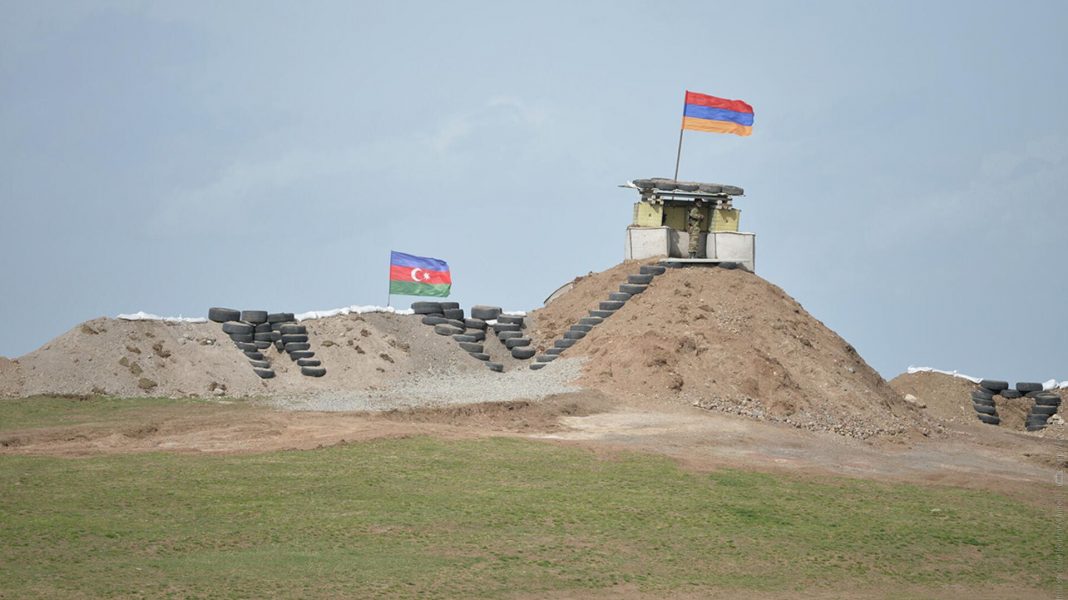The escalation of relations between Armenia and Azerbaijan, which has been observed in recent days, carries many threats and challenges for the two countries and the geopolitical arena as a whole. The situation, in which the interests of several countries are involved, among which Russia, the United States, France, Türkiye and Iran in the first place, is more and more like an explosive mixture of contradictions, which is increasingly difficult to keep under control, but it is also extremely dangerous to let it go by itself.
After the end of the Second Karabakh War in November 2020, local conflicts regularly emerged along the demarcation line, reminding that even the bloody war and the loss of more than two hundred settlements by Armenia could not end the conflict between Baku and Yerevan. A notable feature of such escalations was that they all occurred between August and September – many military experts note that due to the specific weather conditions in this region, the most successful time for conducting hostilities falls on the autumn and spring period (at that time same time, the 1992 Karabakh war began in January).
The escalation we are now watching live is very similar to the events of 2020 and to one of the latest conflicts between the Azerbaijani and Armenian military, which took place on the night of September 13, 2022. However, over the past year, several significant events have taken place, each of which had an important impact on the further development of the situation around Nagorno-Karabakh and relations between Baku and Yerevan.
In this material, Ascolta analyses the key factors influencing the subsequent escalation of the conflict over Nagorno-Karabakh and the risks and threats for all parties directly or indirectly involved in this conflict.
This Content Is Only For Subscribers
Current status
The second Karabakh war ended almost three years ago. As a result, Armenia was forced to agree to almost all the demands of Azerbaijan, in return demanding security guarantees for several thousand Armenians of Karabakh. In turn, Baku has repeatedly stated that the Armenians will have the same rights as the citizens of Azerbaijan.
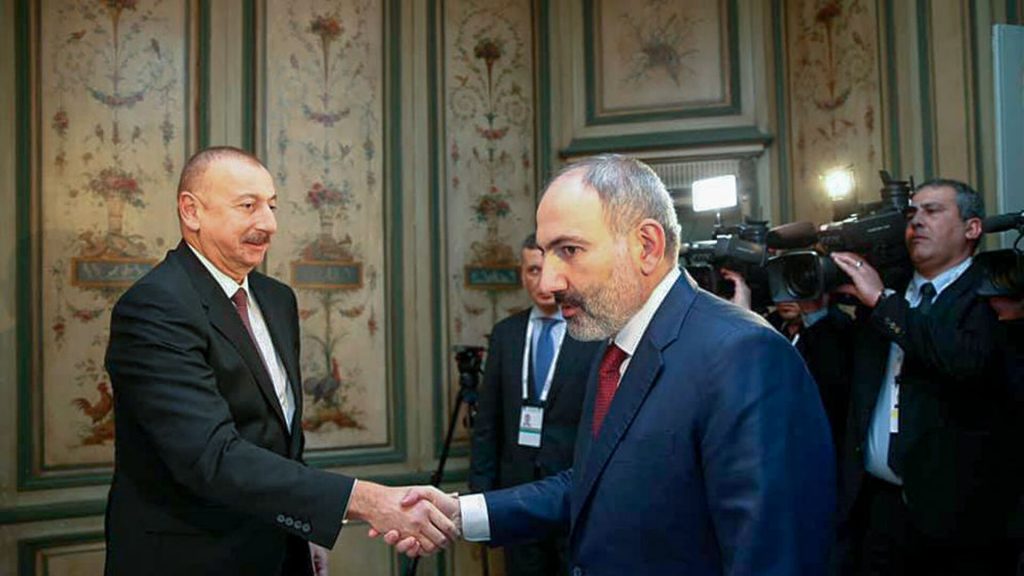
However, since December 12, 2022, the Azerbaijani side has continued the actual blockade of the Lachin corridor, the only road for the delivery of humanitarian goods to Nagorno-Karabakh. Despite the condemnation of such actions by the United States and France, as well as the decision of the International Court of Justice adopted on February 22, 2023, obliging Azerbaijan to unblock the corridor, official Baku still pretends that there are no obstacles to humanitarian cargo. At the same time, the Armenian side is increasingly announcing the aggravation of the humanitarian crisis in Nagorno-Karabakh, as a result of which the Armenians living there are actually dying of hunger.
Over the past three years, Armenian Prime Minister Nikol Pashinyan and Azerbaijani President Ilham Aliyev have held numerous meetings mediated by European Council President Charles Michel, French President Emmanuel Macron, German Chancellor Olaf Scholz, Russian President Vladimir Putin and US Secretary of State Anthony Blinken. As a result, on May 22, 2023, Nikol Pashinyan repeated his earlier statements about his readiness to recognise Nagorno-Karabakh as part of Azerbaijan, but only under the conditions of providing international guarantees for the Armenians living in these territories:
“The perception of the international community is increasingly leaning towards the formula that Armenia and Azerbaijan must, without reservation, recognise each other’s territorial integrity – 29,800 sq. km and 86,600 sq. km, respectively, and a dialogue should be held between Baku and Stepanakert to ensure the rights and security of the Armenians of Nagorno-Karabakh.”
On July 1, Ilham Aliyev and Nikol Pashinyan met on the sidelines of the second Summit of the European Community in Chisinau in the presence of French President Macron, German Chancellor Scholz and President of the European Council Charles Michel. Following the meeting, Pashinyan and Aliyev reaffirmed their commitment, formulated in Prague on October 6, 2022, regarding observing the borders defined in the Alma-Ata Declaration. They confirmed mutual respect for the territorial integrity of Azerbaijan and Armenia. Two weeks later, Aliyev and Pashinyan held another meeting in Brussels, mediated by Charles Michel. At the same time, the President of the European Council stated that, at the moment, one of the most complete and energetic stages of negotiations between Armenia and Azerbaijan is observed.
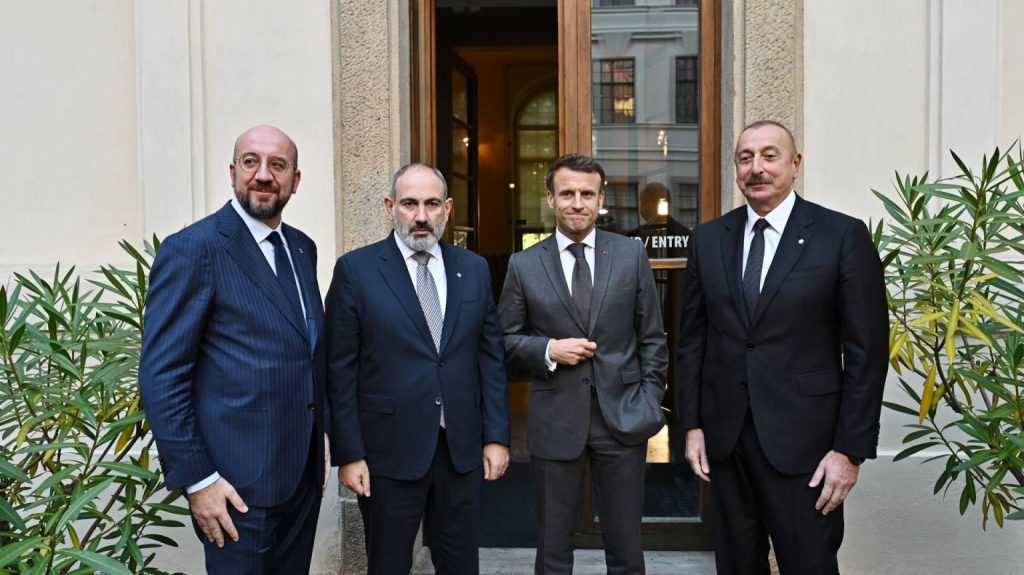
However, after that, relations between Baku and Yerevan began to heat up. The negotiations stopped, the parties began exchanging accusations, and provocations at the border intensified.
In recent days, many observers have managed to draw parallels with the events of 2020:
- The active transfer of military cargo (equipment and weapons) from Israel and Türkiye to the territory of Azerbaijan (several sources claim the arrival of at least five aircraft with weapons).
- The accumulation of Azerbaijani equipment to the border of Armenia.
- Conducting training sessions for reservists on both sides.
- Some other equivalent factors.
Russian “peacekeeping” factor
The decline in Russia’s position both in the issue of resolving the Armenian-Azerbaijani conflict and in influencing Armenia has been noted by many analysts for a long time. At the same time, the final takeover of the initiative by the West was demonstrated on February 18, 2023, when regular negotiations between Aliyev and Pashinyan took place on the sidelines of the Munich Conference with the mediation of US Secretary of State Antony Blinken.
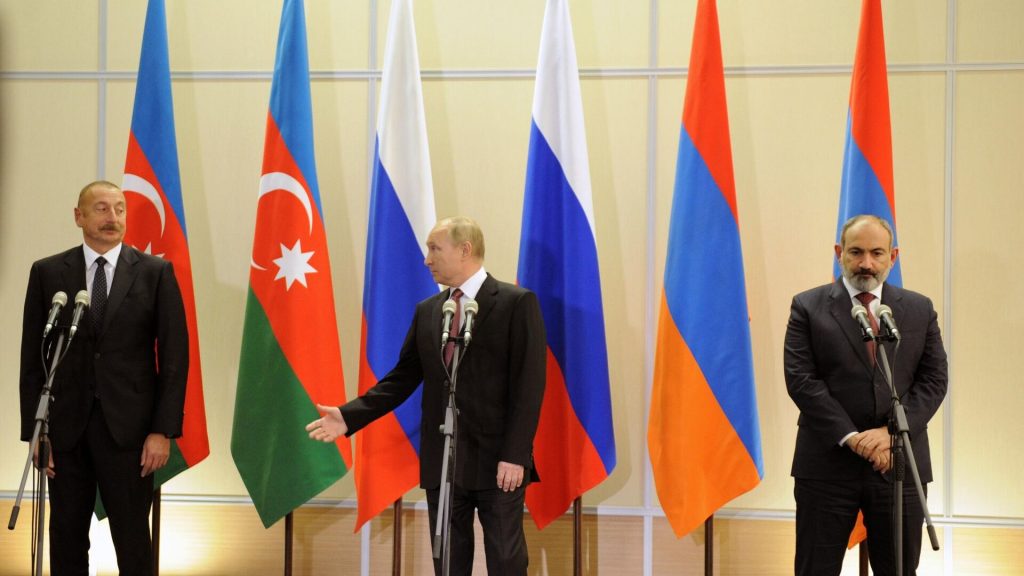
These same negotiations became the starting point for a public demonstration of reaching the final stage of a peace settlement. Three months later, Pashinyan announced his agreement to recognise Nagorno-Karabakh as part of Azerbaijan, and all other nuances seemed insignificant to the world community.
Between May and July, Putin held several separate meetings with Aliyev and Pashinyan and trilateral meetings and thematic events in the context of international organisations of which all three countries are members. However, no visible result could be demonstrated. An interesting point: earlier, Ascolta published the article “Who does Putin talk to after the beginning of the war in Ukraine,” according to which Pashinyan received a confident lead in the list of Putin’s telephone interlocutors. Only during the full-scale invasion of Russia into the territory of Ukraine 18 telephone calls took place between the presidents of Russia and Armenia. However, the last one was on July 5, after which the regular calls stopped.
Against the backdrop of another escalation of the conflict between Baku and Yerevan, the position of the official speakers of Russia is very indicative. In fact, Moscow seems to be getting back at Pashinyan’s attempts to demonstrate independence and excessive flirtation with the United States and the European Union. The reaction of the Russian Foreign Ministry to the escalation of the conflict shows mockery and an attempt to accuse both Pashinyan himself and a number of Armenian politicians of excessive ranting.
On the other hand, it is essential to note that for Russia, the issue of maintaining relations with Armenia is much more important than it might seem at first glance. First, Armenia remains the only predominantly Orthodox country in the South Caucasus loyal to Russia, a significant factor in maintaining its regional influence. Of course, talk about Armenia joining NATO soon is absolutely groundless. Still, strengthening the United States and France in this region is unlikely to suit Russia. It is important to remind you that the largest US embassy in the world is located in Armenia, and in 2022 (with US funds), the construction of a military base for Armenian peacekeepers was completed.
Secondly, throughout the so-called “special operation” of Russia against Ukraine, Armenia tried to maintain neutrality and, in every possible way, avoided public statements condemning Russia’s actions. Also, the Armenian delegation to the UN refrained from supporting resolution ES-11/1, condemning Russia’s actions. However, against the background of the escalation of the conflict with Azerbaijan, having received no support from Moscow, Armenia began to flirt with the West more actively. Recently, statements have appeared about holding joint military exercises between the United States and Armenia; and, for the first time, Yerevan transferred humanitarian aid to Ukraine, while the situation with the Zangezur corridor has worsened.
Thirdly, the Zangezur corridor itself is a strategically important factor for Russia. Back in early June 2023, on the eve of Nikol Pashinyan’s visit to Sochi, Secretary of the Security Council of Armenia Armen Grigoryan stated that in the future, Armenia would independently exercise complete control over the borders, including in the area of the Zangezur corridor. However, according to the 9th paragraph of the tripartite statement (Azerbaijan, Armenia, Russia) on the ceasefire in Nagorno-Karabakh, it is indicated that Armenia provides transport links between the western regions of Azerbaijan and the Nakhichevan Autonomous Region, and control over transport links is carried out by the border service of the Russian FSB. The importance of this direction for Russia, first of all, lies in the fact that the Zangezur corridor is part of the actively developing North-South transport route, which Russia is positioning as the main transport artery in the new global reality.
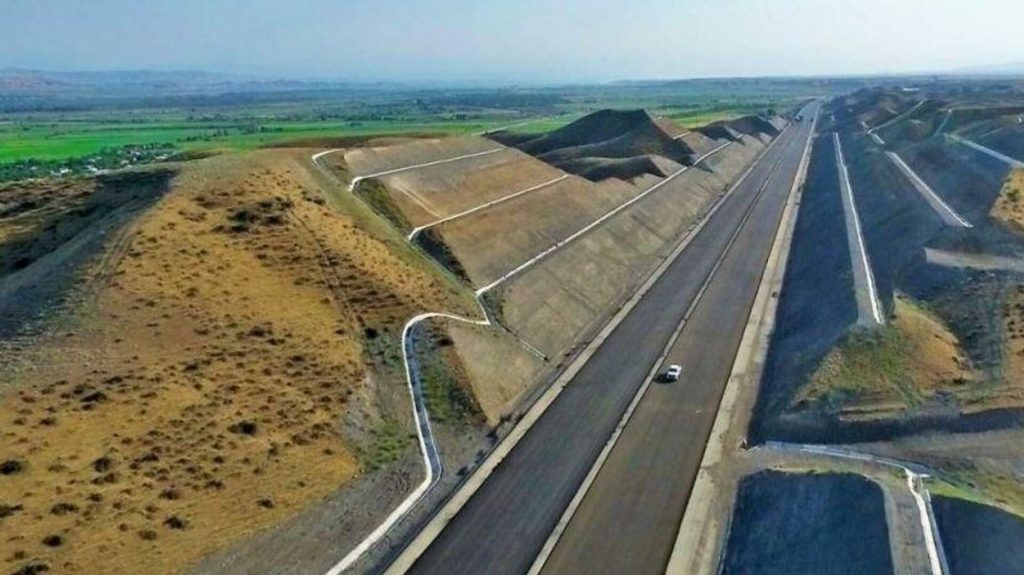
It is important to note that the Zangezur corridor is a section of the border between Armenia and Iran. The presence of the border service of the FSB of the Russian Federation makes it possible to control the supply of dual-use goods to Iran, bypassing the sanctions. There are already active talks that Azerbaijan is planning a military operation in this direction, which will help connect the main part of Azerbaijan with its exclave – the Nakhichevan autonomy. Türkiye could benefit from such a scenario as it will strengthen its position in the region and the United States, which will receive the closure of one of the routes for supplying sanctioned goods to Iran. However, even two months after the statement of the Secretary of the Security Council of Armenia, the border service of the FSB of the Russian Federation is still guarding the borders of Armenia, which may indicate a bluff by the Armenian side to provoke more active actions from Russia.
Fourthly, any clashes between Armenia and Azerbaijan may impact further relations in the conditional union of Russia, Türkiye and Iran, which will affect both the settlement of the Syrian issue and the situation in the region as a whole.
At the same time, it is essential to note that in addition to several threats and challenges for Moscow, a possible new Armenian-Azerbaijani conflict also brings certain geopolitical benefits. It is important to consider that the conditional “peacekeeping mandate” has wholly passed from Russia to the United States and France over the past year. Almost all the meetings between Pashinyan and Aliyev took place under the guise of statements that Moscow had lost Yerevan and could not complete the peace process. Now, the beginning of the conflict will indicate that the West failed, not Russia. The ceasefire declaration in Nagorno-Karabakh, which ended the Second Karabakh War, was signed with the participation of Putin. Now, Putin can say that because of the actions of the United States and France, a new war has begun, which Russia will have to stop again.
Challenging conditions for the USA
In this context, we need to comment that recently, the United States has repeatedly declared a de facto monopoly on resolving the Armenian-Azerbaijani conflict. The main ideologist of strengthening Washington’s position in the South Caucasus was US Secretary of State Antony Blinken. Many also attribute to him the direct supervision of negotiations between Pashinyan and Aliyev.
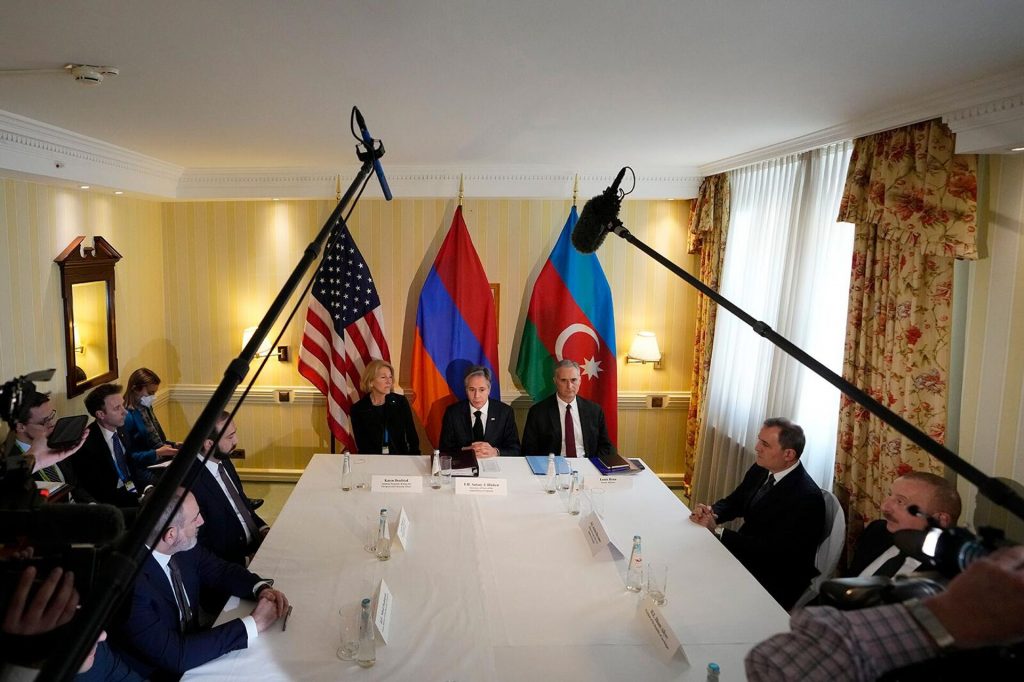
For Blinken, protecting Armenian interests is an important factor not only from the point of view of geopolitics and strengthening the US presence in the region but also from the point of view of domestic political processes. According to various estimates, the Armenian diaspora in the United States numbers about two million people. Most of it lives in southern California, and the largest Armenian community in the country is located in Los Angeles. In this case, it is important to note that American Armenians seriously influence political processes in the country by forming close ties at the diaspora level.
It is noteworthy that the state of California itself is not only the largest in terms of population (15% of the total US population) but also generates about 15% of the country’s GDP. At the same time, the lobbying capabilities of the Armenian diaspora have repeatedly demonstrated a severe influence on internal political processes in the country. In fact, the outbreak of a conflict between Armenia and Azerbaijan could seriously impact the election situation in the United States and increase the threat of the Democratic Party losing one of the key states. This issue may be a key factor in Washington’s activation around the situation in the South Caucasus.
On September 6, Armenia officially announced the holding of the joint Armenian-American exercises “Partner Eagle-2023” from September 11 to 20, which will be held at the Zar training centre of the peacekeeping brigade of the Armenian Defense Ministry as part of preparations for participation in international peacekeeping missions. The exercises involve the implementation of stabilisation tasks between the conflicting parties during a peacekeeping mission. It can be assumed that during the presence of an expanded US military contingent in Armenia, Azerbaijan will not attempt a full-scale offensive.
It is noteworthy that against the background of the aggravation of the situation between Armenia and Azerbaijan, official Yerevan began to react more actively to the situation in Ukraine. After more than a year and a half of tacit acceptance of Russia’s aggression, an Armenian delegation headed by Pashinyan’s wife, Anna Hakobyan, arrived in Kyiv. Also, the media actively disseminated information that Hakobyan brought the first humanitarian aid to Ukraine from Armenia. However, Ascolta sources note that Hakobyan’s main goal was not to participate in the Summit of the First Ladies but to meet with Anthony Blinken (who arrived in Kyiv on the same day) and demonstrative support for Ukraine to provoke Russia.
At the same time, the emergence of yet another hot spot in the region, where US interests are actively developing, poses a serious threat to Washington. The protracted Russian-Ukrainian war weakened Russia and almost completely used up American military equipment and weapons stocks. Moreover, one can hardly count on the fact that the Biden administration will be ready to send American soldiers to protect Armenia. In fact, the threat of a war between Azerbaijan and Armenia puts both Russia and the United States in a very difficult position, in which resources for another front may simply not be found.
It is important to note that such a situation carries threats for Ukraine, which may lose both the global information focus and part of the support from the West, which will have to be redirected to Armenia. Moreover, a political issue also arises: Ankara may perceive Ukraine’s support for Armenia extremely negatively, which is also not beneficial for Kyiv. At the same time, non-support or neutrality in this matter will bewilder Washington. In this case, it can be stated that it is Ankara that is currently playing the main card in the entire region, and the situation both in the Armenian-Azerbaijani conflict and the Russian-Ukrainian war will largely depend on its further actions.
Turkish side of the coin
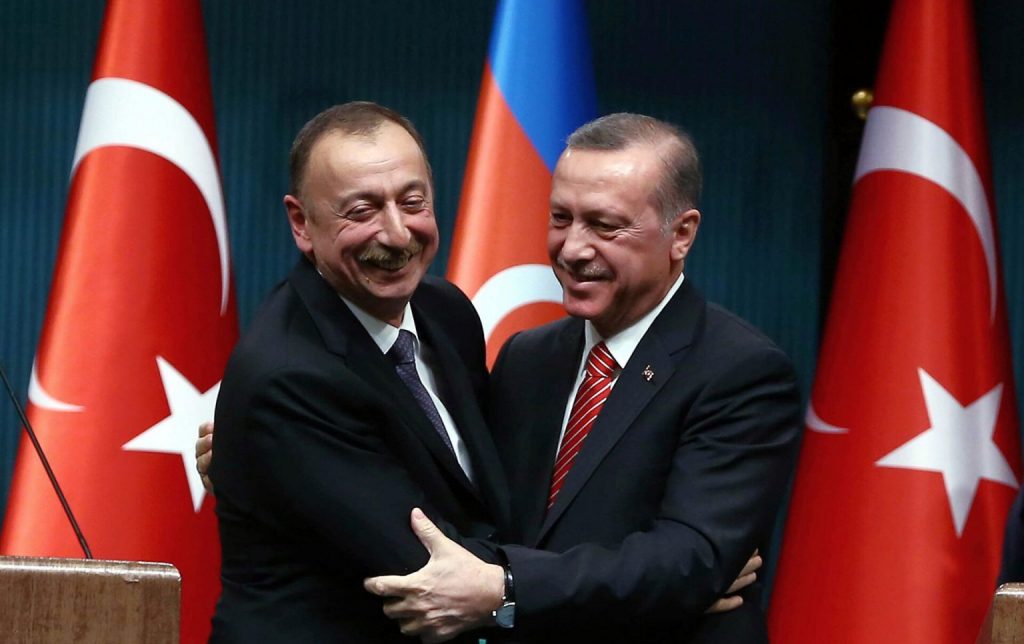
On August 31, Azerbaijani Defense Minister Colonel-General Zakir Hasanov, who is on a working visit to Türkiye, met with Turkish National Defense Minister Yashar Güler. A few days after this meeting, the first videos appeared on the network with the transfer of Azerbaijani military equipment closer to the borders of Armenia. At the same time, information began to come in about the activation of Israel, which allegedly also sent military supplies to Azerbaijan. In this case, Israel’s interest is absolutely logical: Azerbaijan is considered an important factor in confronting the Iranian threat. Moreover, the prospect of blocking the Zangezur corridor is a serious threat to the supply of sanctioned goods to Iran.
In turn, Türkiye is playing a much wider card. Firstly, the solution to the Karabakh conflict favouring Azerbaijan is an unambiguous strengthening of Turkish interests in the region, which both Baku and Ankara have repeatedly stated publicly.
Secondly, after the energy isolation of Russia, Azerbaijan significantly increased gas supplies to Europe, which made it a serious player in the European energy market. In fact, if being supported by Türkiye, Azerbaijan starts hostilities against Armenia, then Europe will find itself in a challenging position and, most likely, will be forced to remain silent and avoid harsh statements against Baku and Ankara.
Thirdly, it is possible that Türkiye can also act as the main peacekeeper, stopping the conflict in its heat. It is too early to talk about such a version, but it looks plausible in further escalation. Thus, in the issue of a peaceful settlement, Erdogan can outplay both Russia and the United States.
Moreover, several Ascolta sources confirm that the issue of the Armenian-Azerbaijani escalation was discussed during the meeting between Erdogan and Putin in Sochi, which took place on September 4. Moreover, during a press conference following the meeting with Putin, Erdogan confirmed that “Armenia’s provocative behaviour in the Caucasus” was also discussed.
However, the information spread online that during the meeting, Putin allegedly agreed to cede Nagorno-Karabakh to Azerbaijan without any additional conditions (including without security guarantees for the Armenians living there) is not true.
According to Ascolta, during the meeting, the issue of reducing the US presence in the region could be discussed by changing the political leadership of Armenia and further resolving the Karabakh conflict without the participation of the West. Thus, the escalation of the situation may be carried out to worsen the political crisis in Armenia and the further resignation of Pashinyan from the post of prime minister. In such a situation, Türkiye will be able to strengthen its influence in the South Caucasus, and Russia will resume full control over Armenia. Apparently, soon, we will observe an attempt to implement such a plan and active opposition from the United States and France.
In a nutshell
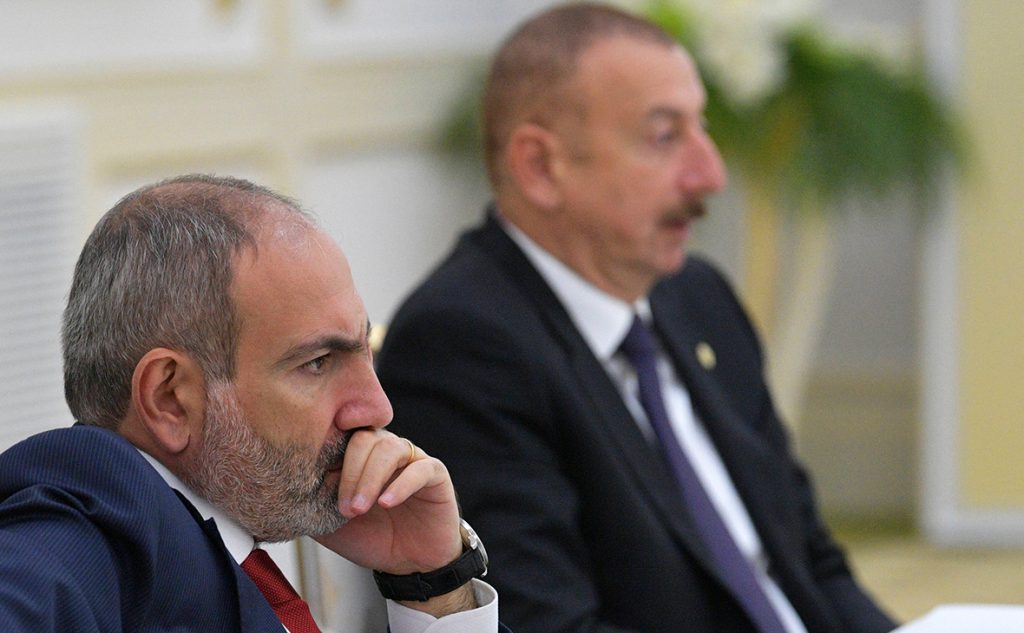
Many factors currently indicate the primary presence of a political game, which is covered by loud statements about transferring military equipment and partial mobilisation. Populist statements by both sides and the news about the transfer of equipment to the border with Armenia, widely circulated by the Azerbaijani side, are more like informational and psychological pressure to provoke an internal political crisis in Armenia than real preparations for war.
In essence, the war is currently beneficial for Azerbaijan, which, by protecting itself from Western sanctions and enlisting the support of several allies, can finally resolve the ethnic issue and harshly eliminate the Armenian factor on its territory.
In turn, Türkiye is in a position where it benefits from both war and peace, which certainly provides Erdogan with additional trump cards. Russia and the United States, essentially the main opponents in this issue at the geopolitical level, can agree that the emergence of another hot spot is not beneficial for either Washington or Moscow.
At the same time, there is less and less time left for manoeuvres and their result, which will result either in a new Karabakh war or a new peace in the South Caucasus; apparently, we will be able to observe in the coming months.

